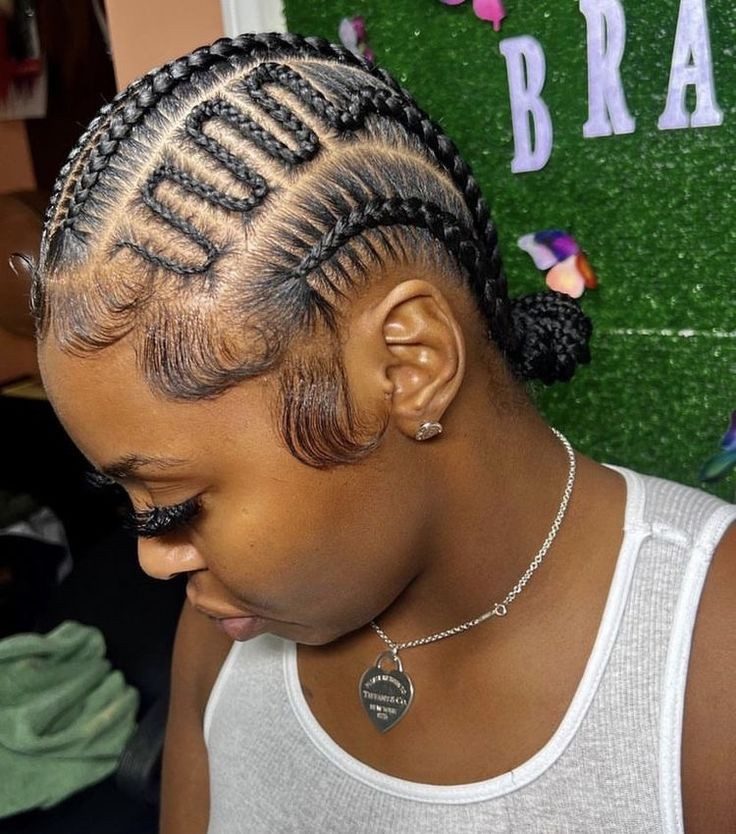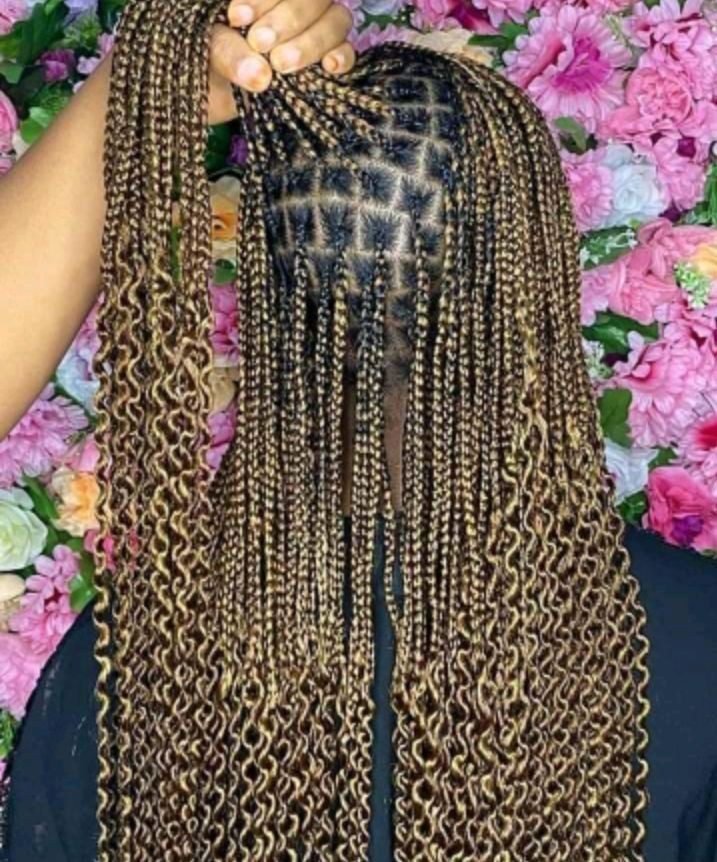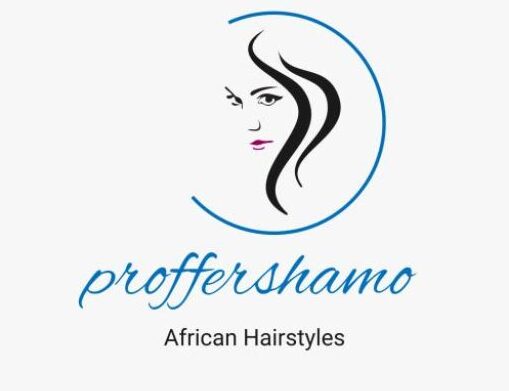Scalp-friendly braids are styles that minimize tension on the scalp, reducing the risk of discomfort or hair damage. Examples include loose French braids, Dutch braids, rope braids, and fishtail braids. These styles distribute weight evenly across the scalp, preventing strain on individual hair strands. Additionally, box braids with lightweight extensions and cornrows with minimal tension are suitable options. Other choices include waterfall braids, crown braids, and twist braids. These braids prioritize comfort and scalp health while still offering a variety of stylish options for different hair lengths and textures

Braids have been a popular hairstyle for centuries, with its origins traced back to ancient civilizations. This timeless and versatile hairstyle has evolved over time, with various techniques and styles emerging. However, one aspect that is often overlooked is the potential damage that braids can cause to the scalp. The tight and continuous pulling of hair strands can lead to tension, irritation, and even hair loss. This is where the concept of “scalp friendly braids” comes into play. It focuses on creating braids that not only look beautiful but also prioritize the health and well-being of the scalp.




As a professional in the hair industry, it is crucial to understand the importance of scalp health and how braiding techniques can impact it. In this article, we will delve deeper into the world of scalp friendly braids, exploring the benefits, techniques, and products that promote a healthier scalp while still achieving stunning braided hairstyles. So, whether you are a stylist looking to provide your clients with more scalp-friendly options or someone who loves braids but experiences discomfort, this article is for you.
1.Scalp braids for beginners
Scalp braids, ideal for beginners, involve weaving small sections of hair close to the scalp. Start with clean, detangled hair. Divide hair into sections, then begin braiding, incorporating small sections from each side. Secure with an elastic band or hair tie. Practice creates proficiency.




2.Scalp braids with knotless braids
Knotless scalp braids involve gradually adding hair to the braid without creating a visible knot at the base. Begin by sectioning hair, then gradually add small sections while braiding, ensuring a seamless, natural look. This technique reduces tension and promotes hair health.

Practice and patience are key for mastering knotless scalp braids.
3.Layer scalp braids
Layered scalp braids involve creating multiple rows of braids at different levels on the scalp, giving a multidimensional look. Start with clean, detangled hair, then section it into layers. Braid each layer separately, starting from the bottom and working upwards. Secure each braid neatly for a polished finish.

3.Scalp braids to the side
Side scalp braids add a stylish twist to your look. Begin by parting your hair to the side. Then, start braiding a small section of hair close to the scalp, incorporating hair from the parted side. Continue braiding towards the ear or nape, securing with an elastic band or hair tie for a chic side-swept effect.






4.Scalp braids natural hair
Scalp braids on natural hair showcase its beauty and versatility. Begin with clean, moisturized hair. Section the hair and start braiding close to the scalp, using natural hair-friendly products for hold and moisture. Experiment with different braid sizes and styles to find what works best for your hair texture and length. Regular maintenance and gentle handling help preserve your hair’s health.

5.Off scalp braids
Off-scalp braids involve braiding the hair away from the scalp, creating a looser, more relaxed look. Unlike scalp braids, which are tightly woven close to the scalp, off-scalp braids allow more movement and flexibility. Start with clean, detangled hair, then braid sections away from the scalp, incorporating desired styling techniques for a unique, carefree look.




6.Regular scalp braids
Regular scalp braids involve weaving small sections of hair close to the scalp in a uniform pattern. Begin with clean, detangled hair. Divide the hair into sections, then start braiding each section close to the scalp, incorporating small sections of hair from each side. Secure the ends with an elastic band or hair tie for a neat finish.

7.Loose scalp braids
Loose scalp braids offer a relaxed, casual style. Begin by parting the hair and dividing it into sections. Braid each section gently, leaving some space between the braid and the scalp for a looser appearance. Secure the ends with an elastic band or hair tie. This style is perfect for a laid-back yet chic look.

8.Close scalp braids
Close scalp braids involve tightly weaving small sections of hair close to the scalp. Begin with clean, detangled hair. Section the hair and start braiding each section tightly, ensuring the braid sits snugly against the scalp. Continue braiding until the desired length, securing the ends neatly. This style is sleek and polished, perfect for a clean look.

9.Scalp braids with curly hair
Scalp braids with curly hair create a stunning look. Begin with clean, moisturized curls. Section the hair and start braiding each section close to the scalp, incorporating the natural texture of the curls for added volume and definition. Use a styling product to enhance the curls and hold the braids in place.

10.Dry scalp from braids
Dry scalp from braids can occur due to the lack of moisture reaching the scalp. To alleviate this, try massaging a lightweight oil or moisturizing scalp treatment into the scalp regularly. Avoid washing your hair too frequently, as it can strip away natural oils. Opt for gentle cleansing and deep conditioning treatments to maintain scalp health while wearing braids.

11.Flaky scalp from braids
Flaky scalp from braids can result from product buildup, dryness, or irritation. To address this, use a gentle clarifying shampoo to remove buildup, followed by a moisturizing conditioner. Incorporate a scalp treatment containing ingredients like tea tree oil or aloe vera to soothe irritation and reduce flakes. Avoid scratching your scalp to prevent further irritation.




12.Grease scalp with braids
To address a greasy scalp while wearing braids, consider using dry shampoo specifically formulated for braids or cornrows. Apply it directly to the scalp and massage it in gently to absorb excess oil and refresh your scalp. Additionally, avoid applying heavy oils or products directly to the scalp to prevent further greasiness.

13.Half scalp half box braids
Half scalp, half box braids offer a versatile style. Section the hair horizontally, with the top half left loose and the bottom half divided into smaller sections for box braids. Braid the bottom half using the box braiding technique, while leaving the top half free-flowing. This style combines the sleekness of scalp braids with the texture of box braids for a unique look.




14.Red scalp from braids
A red scalp from braids can indicate irritation or inflammation. To address this, avoid tight braids and excessive tension on the scalp. Apply a soothing scalp treatment containing ingredients like aloe vera or chamomile to calm irritation. If the redness persists or is accompanied by pain, consult a dermatologist for further evaluation and treatment.




15.Scalp braids updo hairstyles
Scalp braids can be styled into elegant updos for various occasions. Try gathering the braids into a high bun or ponytail, securing them neatly with hairpins or elastics. Alternatively, twist the braids into a chic chignon or braided crown. Experiment with different placement and styling techniques to create a sophisticated look that highlights your scalp braids.




16.Side scalp braids
Side scalp braids add flair to your hairstyle. Part your hair to the side, then start braiding a small section close to the scalp, incorporating hair from the parted side. Continue braiding towards the ear or nape, securing with a hair tie for a chic side-swept effect.

17.Scalp braids with shaved sides
Scalp braids with shaved sides create a bold and edgy look. Begin by sectioning the hair and braiding the remaining hair close to the scalp. For the shaved sides, ensure they are neatly trimmed or shaved according to your desired style. The contrast between the braids and shaved sides adds dimension and personality to your hairstyle.




18.Scalp braids with box braids
Combining scalp braids with box braids offers a versatile and stylish look. Start by sectioning the hair, then create scalp braids on one side or in the front while leaving the rest of the hair for box braids. This mix of braiding styles adds texture and visual interest to your hairstyle, allowing you to express your creativity.




19.Scalp braids with a bun
To achieve scalp braids with a bun, start by creating scalp braids across your head, leaving some hair loose at the crown. Gather the loose hair into a high ponytail and secure it with an elastic band. Twist the ponytail into a bun and secure it with bobby pins. This style combines the sleekness of scalp braids with the elegance of a bun.




20.2 layer scalp braids
Two-layer scalp braids involve creating two rows of braids on the scalp. Begin by parting the hair into two sections horizontally, creating an upper and lower section. Then, braid the lower section close to the scalp, incorporating small sections of hair from each side. Repeat the process for the upper section, creating a second row of braids above the first. This style adds dimension and interest to your scalp braids.

Gentle braiding techniques for sensitive scalps.
When it comes to braiding hair for individuals with sensitive scalps, it is essential to use gentle techniques that minimize discomfort and potential damage. One such technique is the use of smaller section sizes during the braiding process. By dividing the hair into smaller sections, it reduces the tension and pulling on the scalp, ensuring a more comfortable experience. Additionally, incorporating a moisturizing and nourishing hair product before braiding can help to provide lubrication and minimize friction on the scalp.




This not only enhances the comfort level but also promotes healthier hair growth. Furthermore, opting for looser and less tightly woven braids can alleviate strain on the scalp, reducing the risk of irritation and inflammation. By employing these gentle braiding techniques, individuals with sensitive scalps can enjoy the stylish benefits of braids while prioritizing scalp health and comfort.
Avoiding tension for healthy follicles.
To maintain healthy follicles, it is crucial to avoid subjecting the scalp to excessive tension. Tension on the scalp can lead to hair breakage, traction alopecia, and damage to the hair follicles. One way to prevent this is by choosing hairstyles that do not pull too tightly on the scalp, such as loose and natural-looking braids. When braiding, it is important to use a gentle technique that minimizes the strain on the hair and scalp.




Additionally, taking regular breaks from braiding and allowing the scalp to rest can help prevent tension-related issues. By prioritizing scalp health and avoiding excessive tension, individuals can promote the growth of healthy follicles and maintain strong and vibrant hair.
The benefits of scalp massages.
Scalp massages offer a multitude of benefits for both the hair and overall well-being. These gentle massage techniques stimulate the blood flow to the scalp, promoting increased nourishment and oxygenation to the hair follicles. This can result in improved hair growth and thickness. Additionally, scalp massages help to relax the muscles of the scalp and alleviate tension and stress.






By reducing stress levels, it can also contribute to a healthier scalp environment, reducing the likelihood of conditions such as dandruff or scalp inflammation. Furthermore, scalp massages can provide a soothing and rejuvenating experience, promoting relaxation and a sense of calm. Incorporating regular scalp massages into your hair care routine can lead to healthier, stronger hair and a renewed sense of well-being.
Choosing the right hair products.
When it comes to choosing the right hair products, it is essential to consider various factors to ensure optimal hair health and styling results. Firstly, it is important to determine your hair type and specific needs. Whether you have fine, thick, curly, or straight hair, understanding your hair’s unique characteristics will guide you in selecting the appropriate products. Secondly, consider your desired hairstyle or hair goals. Are you looking for voluminous, frizz-free, or color-treated hair? Different products cater to specific styling needs, such as voluming shampoos, smoothing serums, or color-protecting conditioners.

Lastly, take into account any sensitivities or allergies you may have. Look for products that are hypoallergenic or formulated without harsh chemicals to avoid any adverse reactions. By carefully selecting the right hair products tailored to your hair type, styling goals, and personal preferences, you can achieve healthy, beautiful hair that looks and feels its best.
Styling tips for scalp comfort.
As we focus on scalp friendly braids, it is important to consider styling tips that prioritize scalp comfort. One key tip is to avoid styles that put excessive tension on the scalp, such as overly tight braids or ponytails. Opt for looser braids or styles that allow for movement and minimize strain on the scalp. Additionally, using a wide-tooth comb or fingers to detangle the hair before styling can help reduce pulling and discomfort. Another helpful tip is to opt for braiding or styling products that are lightweight and non-greasy, as heavy products can weigh down the hair and potentially lead to scalp irritation.

Lastly, taking breaks between braiding sessions and giving the scalp time to rest and breathe can help maintain scalp health and prevent discomfort. By incorporating these styling tips into your scalp friendly braids routine, you can ensure a comfortable and enjoyable styling experience.






In summary, scalp friendly braids are a great option for those who love the look and convenience of braided hairstyles, but want to prioritize the health and comfort of their scalp. By using proper techniques and materials, as well as taking care of your scalp during and after the braiding process, you can achieve a stylish and protective hairstyle without causing unnecessary damage or discomfort. So, next time you’re considering braids, remember to prioritize your scalp and opt for scalp friendly braids for a healthier and happier hair experience.


